These locos were brought to Mumbai late in 1999 to participate
in various events. Unfortunately not much happened, except the WP
was used during the shooting of a film. The WP is in one of the two
locos refurbished in the Charbagh shed at Lucknow of the Northern
Railways and will haul the Palace of Wheels train in some section.
It was rumoured that the narrow gauge W class power was to be
plinted at Mumbai Central station. However it was returned to
Bilimora.
This are the pictures of the locos in the BAMY shed which
normally homes WDS4 shunters and visiting WDM2s from shed such as
Vatwa, Ratlam and Ernakulam.
 |
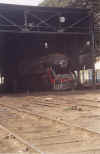
|
 |
Views of the BAMY diesel shed holding the WP and W locos. The
first pic is from the walkway from the Khar Road station. |
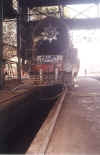
|
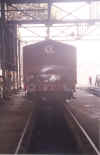
|
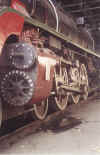
|
The loco has been fitted with a rear headlamp to work tender
foremost in absence of a turntable. |
 |
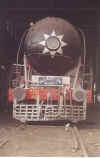
|
 |
The railwaymen do not trust parking brakes. Stones are almost
always placed under the wheels to prevent the loco from rolling
accidentally. |

|

|

|
After the refurbish, the loco can haul air braked rakes (like
the Palace on Wheels, as the nameplate states). Note the three air
hoses for the brakes.The loco lacks an air compressor and draws on
the one fitted to the diesel genset in the PoW rake's power
car. |

|

|
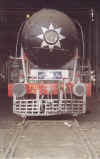
|
Note the addition of the yellow flasher lamp over the nose
fairing. All the IR locos are required to have these to warn the
opposing traffic in case of any hazard. |

|

|

|
Names of the crew is painted near the cab. The additional air
brake pipes are laid outside the loco frame. Anyone looking forward
to hearing a WP hard at work would have to worry about the PoW
rake's generator car which would be always coupled right after the
loco to supply the air. |

|
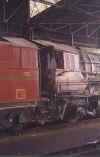
|
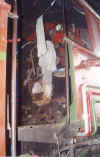
|
The crew from Saharanpur shed is camping with the loco. Their
clothes drape the interior of the cab. Also visible is the jump
seat for the driver. |

|

|
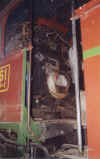
|
The A9 valve and the gauges for the train brake has been placed
on the tender wall. Please note the lighting battery which must be
used to operate the flasher lamp even if the loco is dead. These
modifications are essential if the loco is to operate on the busy
mainlines of today. |

|
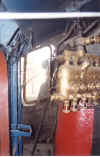
|

|
The classic wheels of the WP/1. Note the brass lubricator in
the centre pic. |

|

|

|
W class on a flatcar inside the BAMY shed. Is there a plant
growing in the corner of the tender seen in the first picture? |

|
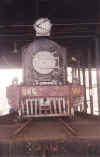
|

|
This loco operated on the Bilimora - Waghai Narrow gauge (2'6")
section in Gujarat. |
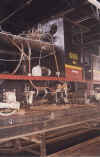
|

|

|
What is the function of the black cylinder below the headlamp
generator? The loco is on rails but prevented from moving by the
wooden logs across. |



































